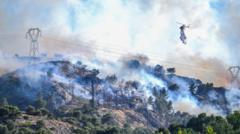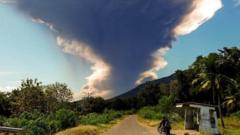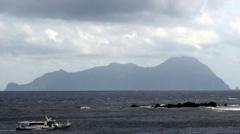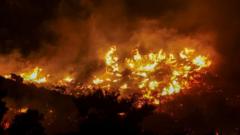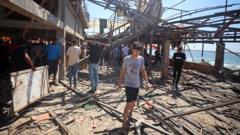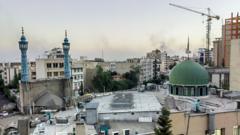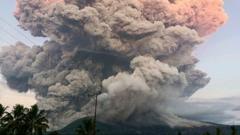Reykjavik, Iceland - On Wednesday, July 16, 2025, Iceland's Sundhnukur crater erupted, marking the 12th volcanic event in four years from this increasingly active system. Authorities reported that the eruption, which occurred at 3:56 a.m. local time, released small amounts of lava and was accompanied by clouds of smoke. Fortunately, it did not pose any immediate danger to the nearby fishing village of Grindavik or the popular tourist destination, the Blue Lagoon.
Iceland's Sundhnukur Crater Erupts Again: No Immediate Threat to Communities

Iceland's Sundhnukur Crater Erupts Again: No Immediate Threat to Communities
An active volcanic system near Reykjavik experiences another eruption with minimal impact on local infrastructure.
The Icelandic Red Cross assured the public that there was no threat to lives or infrastructure following the eruption. Prior to the event, precautionary evacuations took place in Grindavik and around the Blue Lagoon, offering safety to the surrounding communities. The Icelandic Meteorological Office confirmed that seismic activity had been detected in the area for over two hours before the eruption, indicating a build-up of magma pressure below the surface.
The active fissure that formed during the eruption measured approximately half a mile in length, with lava predominantly flowing southeast, away from populated areas. As the gas cloud from the volcano drifted toward the main international airport, officials noted that as of 6:30 a.m. local time, flights remained unaffected.
Historically, volcanic eruptions in Iceland occurred every three to four years; however, this rapid succession of frequent eruptions indicates a shift in the behavior of the Svartsengi volcanic system. There have now been 12 recorded eruptions from this system, as scientists closely monitor ongoing volcanic activity.
As authorities continue to assess the situation, residents in and around Grindavik and the Blue Lagoon remain on alert but safe, and no injuries or damage have been reported at this time.
The active fissure that formed during the eruption measured approximately half a mile in length, with lava predominantly flowing southeast, away from populated areas. As the gas cloud from the volcano drifted toward the main international airport, officials noted that as of 6:30 a.m. local time, flights remained unaffected.
Historically, volcanic eruptions in Iceland occurred every three to four years; however, this rapid succession of frequent eruptions indicates a shift in the behavior of the Svartsengi volcanic system. There have now been 12 recorded eruptions from this system, as scientists closely monitor ongoing volcanic activity.
As authorities continue to assess the situation, residents in and around Grindavik and the Blue Lagoon remain on alert but safe, and no injuries or damage have been reported at this time.



